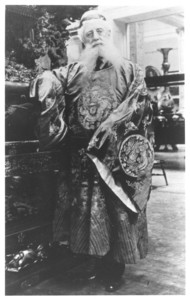Lyman & Merrie Wood Museum of Springfield History, Various Galleries
Created by the Community Foundation of Western Massachusetts
This exhibition highlights philanthropists who have left a lasting legacy in Springfield and the Pioneer Valley. Large photo panels displayed throughout the museum tell the stories of generous local citizens and how they made an impact on the lives of future generations.
- Primus Mason was born in 1817 to free black parents. He was indentured to a farmer who treated him cruelly and at age 20 he fled to Springfield where he began buying and selling parcels of land. He was so successful that he left $25,000 to establish a home for aged men. Later another Springfield man, Horace Wright, contributed and the institution is now known as the Mason-Wright Retirement Community. Mason Square is also named in honor of Primus Mason.
- Everett Barney, who made his fortune manufacturing ice skates, gave the city 178 acres of his luxurious estate on the Connecticut River to establish what is now Forest Park.
- George Walter Vincent Smith made his fortune as a carriage manufacturer in New York City and retired at age 35. He and his Springfield-born wife, Belle Townsley Smith, donated their collection of more than 6,000 art objects to establish the first museum in Springfield. The George Walter Vincent Smith Art Museum opened in 1896 and its appearance and character have been carefully preserved through the years.
- Daniel Wesson, who founded Smith & Wesson in 1856 with Horace Smith, used his wealth to build a general hospital and later another hospital for women. He also built a home for the nurses who worked at the two hospitals. The Wesson buildings at Baystate Medical Center still serve residents of the Pioneer Valley.
- Sophia Smith was born to a prosperous Hatfield farm family in 1796. She always wanted more education than was customary for girls at that time. When she died, she left money to found a college for women in order to provide educational facilities “equal to those which are afforded now in our Colleges to young men.” As a result of her bold vision, Smith College opened in 1875.
- Julia B. Buxton took over the operation of the family leather goods business in 1944. She was the first woman trustee at Springfield College and endowed a professorship there. She also established a foundation to help worthy Springfield non-profits. Today, that trust is managed by the Community Foundation.

